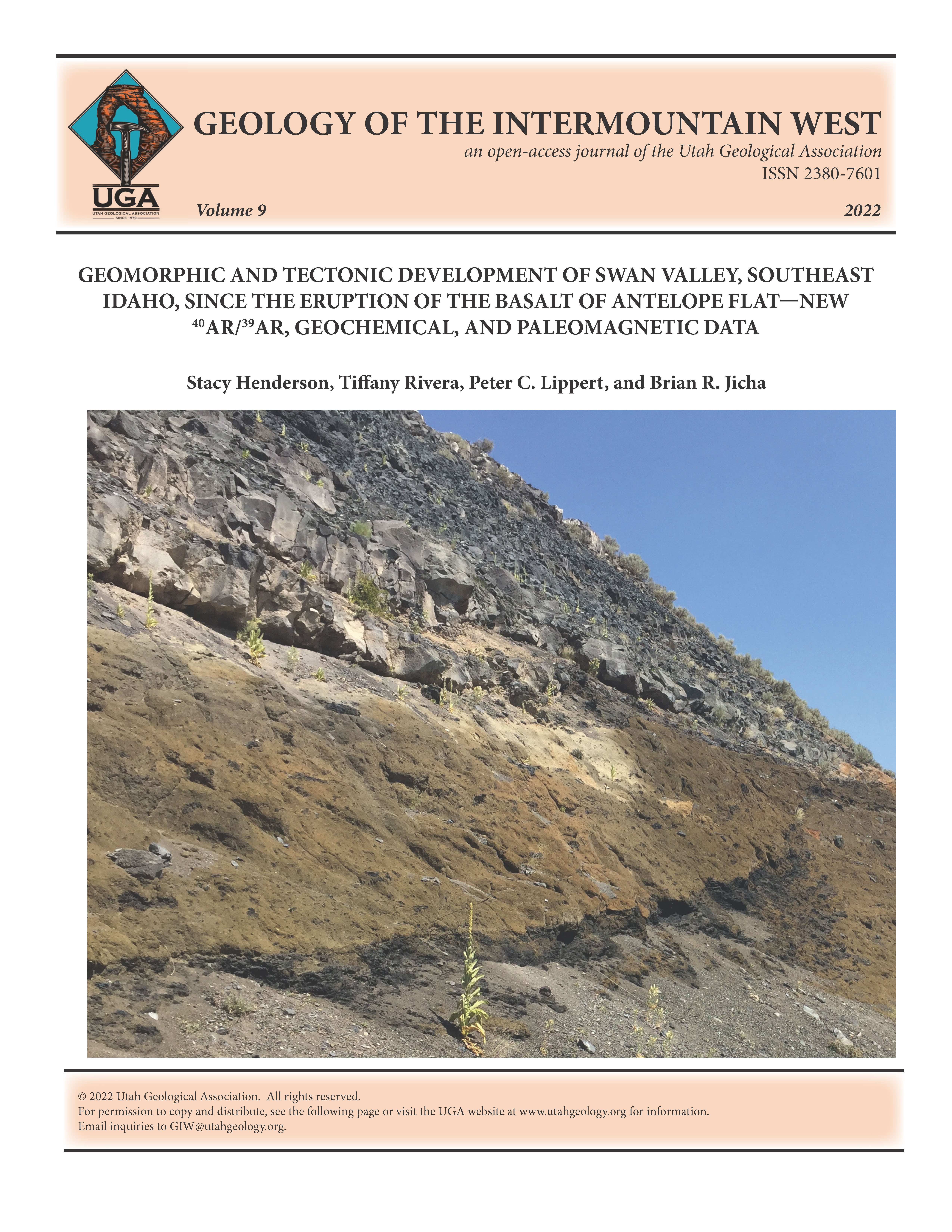Geomorphic and tectonic development of Swan Valley, southeast Idaho, since the eruption of the Basalt of Antelope Flat—new 40Ar/39Ar, geochemical, and paleomagnetic data
Abstract
Swan Valley is a graben in eastern Idaho that formed by extension along the Grand Valley and Snake River faults and preserves a record of explosive rhyolitic volcanism sourced from the Yellowstone Plateau and Heise volcanic fields, as well as locally sourced basaltic lavas. The Pleistocene Basalt of Antelope Flat intersected the South Fork of the Snake River and generated a temporary hyaloclastite dam. Previous workers proposed that the lava dam allowed for the accumulation of water that led to the generation of paleo-Swan Lake. Although lacustrine deposits from paleo-Swan Lake have not been described or mapped, several-meters thick intercalated hyaloclastites and pillow lavas require the interaction between continued volcanism and standing water. In this work, we present new geochemical, geochronologic, and paleomagnetic data to reinterpret the eruptive history of the basalts within the valley, estimate the volume and duration to fill paleo-Swan Lake, and calculate incision rates of the Snake River through Quaternary basalts. Using geochemical and paleomagnetic data, we reinterpret deposits previously mapped as the Basalt of Antelope Flat as three temporally distinct units. The duration to fill paleo-Swan Lake is calculated as 12 to 20 years. An absence of lacustrine deposits, shorelines, or other indicators of a lake environment led us to propose that shallow, marshy, wetland conditions existed locally to produce hydrovolcanic deposits characteristic of the Basalt of Antelope Flat. We report a new 40Ar/39Ar age of 904 ± 11 ka (2σ) for the Basalt of Antelope Flat, which we use to determine an average incision rate of 0.014 cm/yr for the Snake River
through Quaternary basalts. Our multi-method approach provides updated constraints to the eruptive and geomorphological history of southeastern Idaho.





